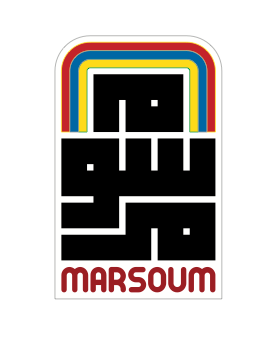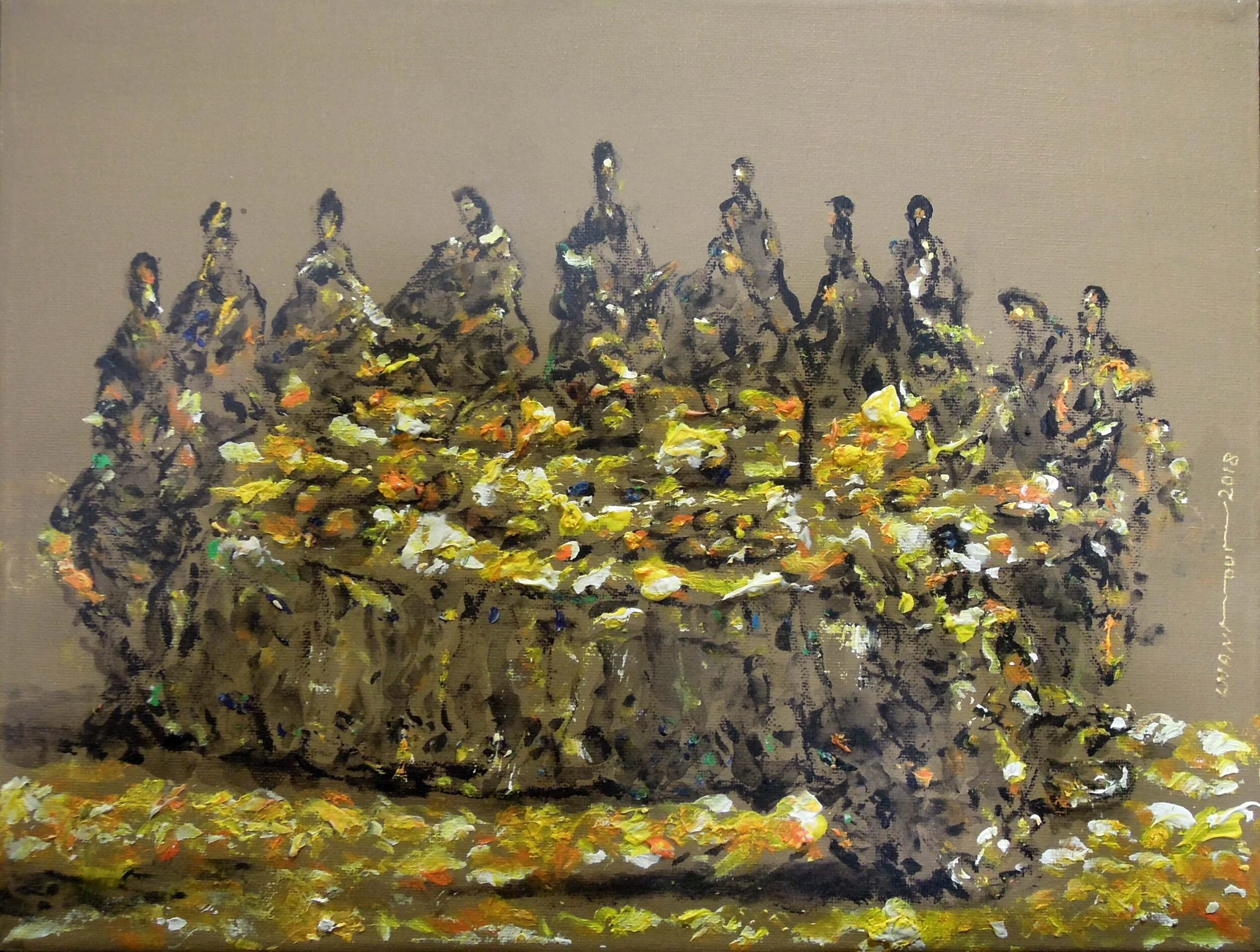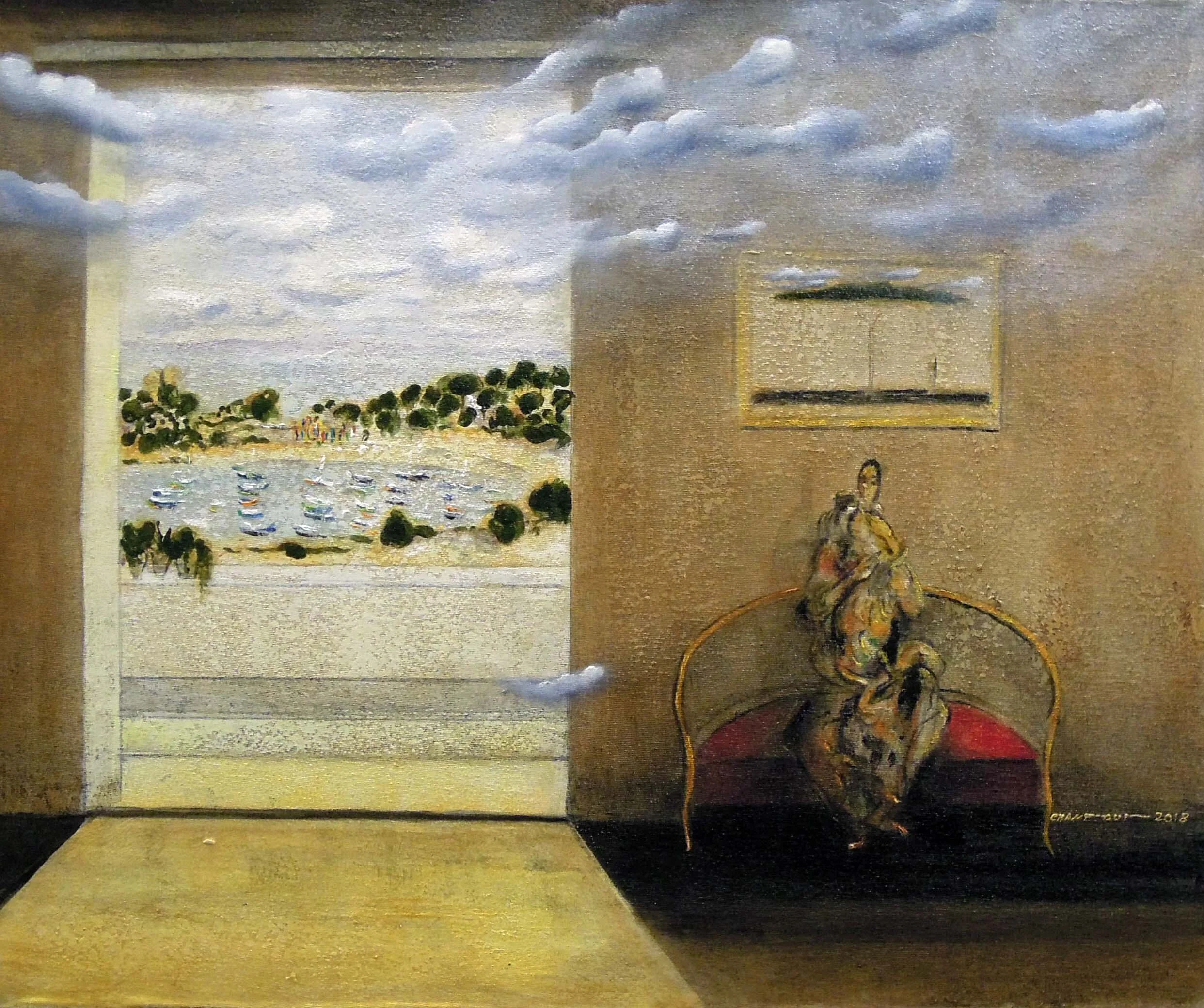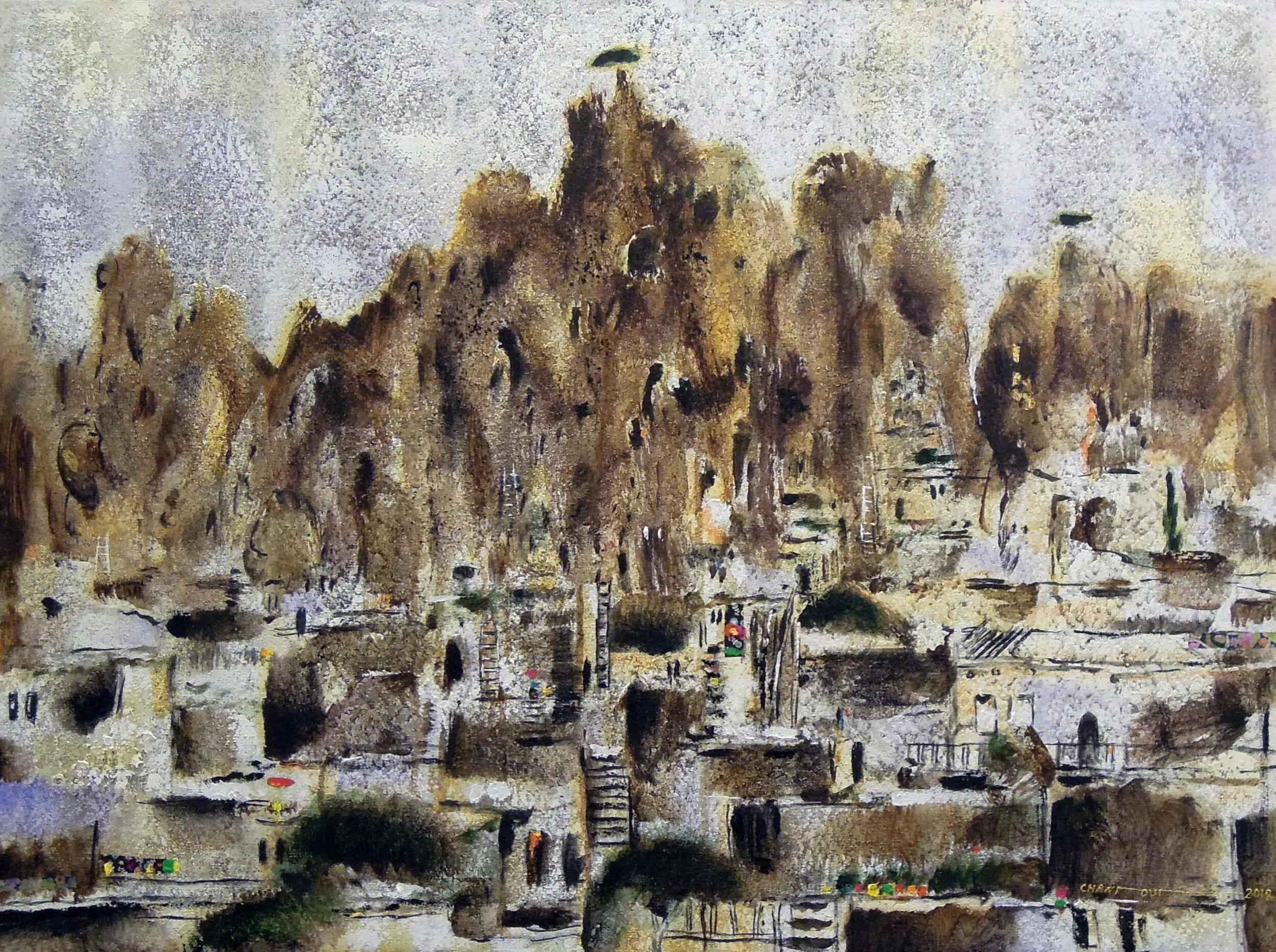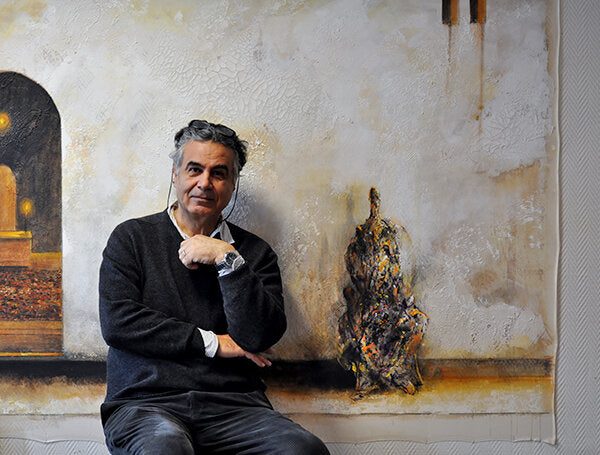
The Art of Hammoud Chantout (In His Own Words)
Share
We caught up with one of our most celebrated painters, Hammoud Chantout to ask him about his artistic journey. Hammoud ended up sharing surprising anecdotes from his childhood, recounts of his first attempts at breathing life into the images in his mind, and an insightful dive into the language of his paintbrush.
Chantout’s Introduction To Art
During my childhood, I did not draw or paint anything as my school cared about everything but drawing. But in my old mud house, I used to contemplate its walls where I saw pictures of battles, horses, trees, and faces. It was the same wall that was covered with dirt and lime where I saw new images and dreamt of other worlds each day.
This was the only fun I had when I would spend long periods in bed when I would have a fever. So I used to lie down in bed and contemplate other worlds on the walls that were in front of me.
Bringing The Images In Chantout’s Mind To Life
The first time I attempted to bring the images I saw to life was when I was 14 years old. It was at the beginning of Middle school. I had a wonderful art teacher.
Once I started drawing, I couldn’t stop. In fact, I have never really stopped drawing or painting since then. Until today, I get so immersed in painting, that I lose track of time. So it’s fair to say that I find great pleasure in painting.

Hammoud Chantout (left) and Oroubah Dieb (right) with Majdoline Ghezawi of Dar Al-Anda (center) in Hammoud’s home studio in Créteil, France.
The Subjects of Chantout’s Art
Over the years, I have painted many subjects; Arabic houses, studios, still life, portraits of the characters from the tales of “A Thousand and One Nights”, and the many states of being in love.
Although I enjoy painting all of these subjects that I just mentioned, my favorite subject is, and will always be the wall. The wall takes me back to that white wall I contemplated when I was a kid, for it was where I projected all of my childhood dreams. The openness of the white wall also gives me the opportunity to create something simple, beautiful, and distinctly Eastern. It really allows me to create paintings that reflect what’s in my soul.
Decoding The Language of Hammoud Chantout’s Art
Colors are the language of an artist’s soul. My alphabet consists of combining glowing touches of colors with softer touches. The goal is to set a range of visual contrast, then move within it towards a spontaneous expression that reflects the movement and vitality of the shapes I’m painting. In this context, I use colors in different ways and with different sensitivities that vary in tenderness and vitality.
This freedom that goes beyond any preconceptions has me going on colorful adventures were strong and expressive shades of red, yellow and white intersect. By making the dialogue of colors in the painting more intense, I allow the viewer to see more emotional and active rhythmic dimensions in the painting’s negative space. When I use bold colors like red, I use my intuition to balance them with the white walls within the painting. I also pay close attention to the patterns of light and darkness throughout the painting, as to not cause any of the painting’s rhythms to out of tune. I treat my work as it were visual music that the eyes listen to.
Based on this rhythmic notion, the elements within the painting range from dreamy sensational movements to bursting emotions. These elements find their rhythms across colors and lines from one painting to the next.
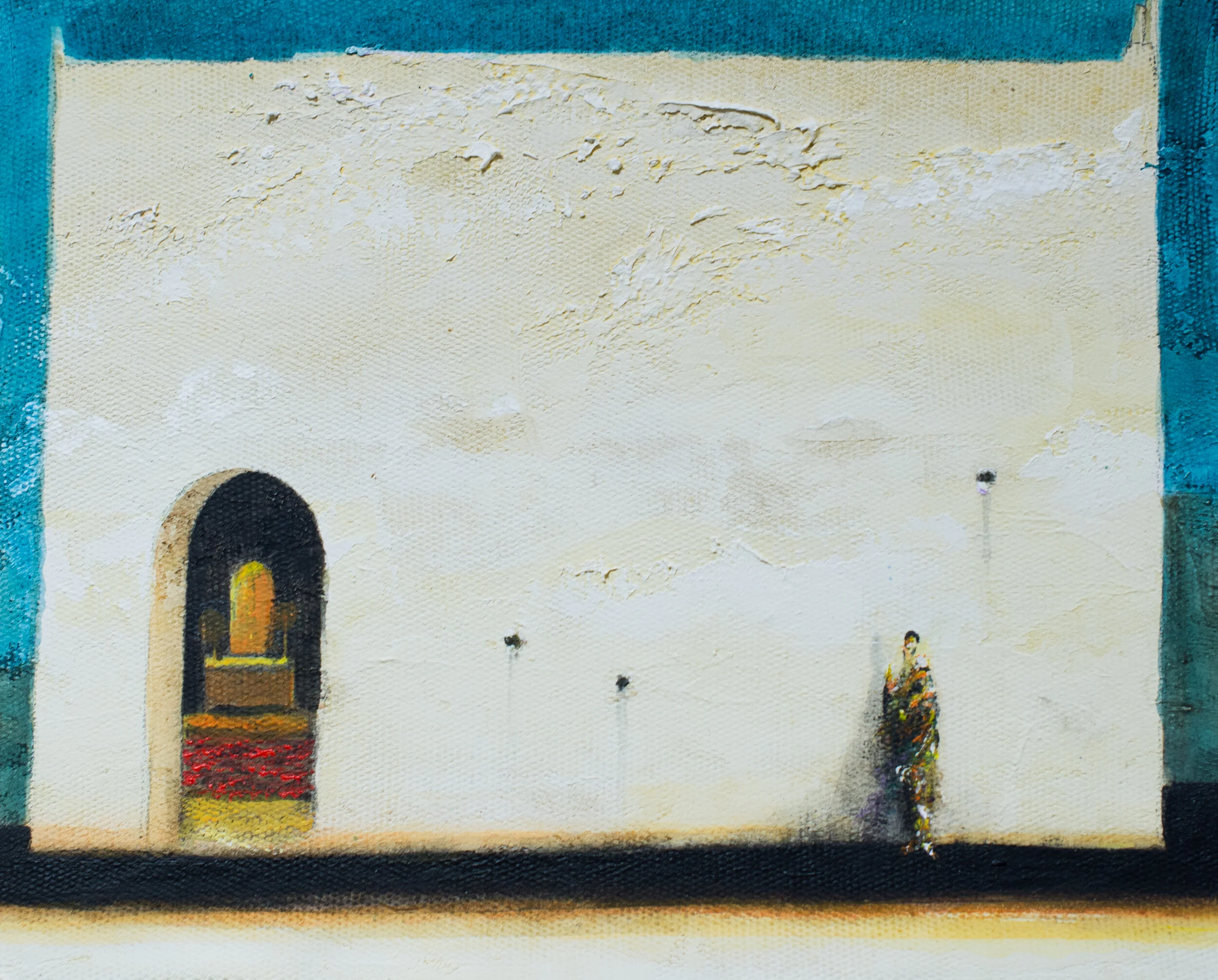
Much like the duality between the light and the dark, I create my art across two planes of existence that satisfy my artistic needs. The first one presents itself in the forms of the characteristics of the distorted subjects such as the human, still life, landscapes, architecture, and animals. I keep the expressiveness of the form without eliminating its characteristics that may lead to abstraction. The second plane is tied closely to the first as these forms often turn into open spiritual cosmos that move freely along the bright sparks of light. The flowing light is largely inspired by the candlelight I was exposed to a lot while working at a church in France. That experience had a mysterious and mystical impact on me.
In my art, I leverage the existential discomfort that came from the nightmares of living in the cages of consumeristic cities. I counter this anguish through soothing depictions of the room, nature, the female form, and the many elements I’ve encountered since relocating to Paris, the capital of arts.
I still work off this foundation as I prepare for my upcoming works. My art form is ever-evolving and I have become keener on incorporating different media in every artwork (acrylic, oil, coal, clay, collage, etc), for it is through the diversity of media, experiences, and outcomes that I am able to attain the rhythm of a contemporary painting. One that is bursting with imagination and bustling with romanticism, akin to an opera of spontaneous colors.
Hammoud Chantout In The Press:

Written by: Abdulah Al-Ghoul
Abdulah Al-Ghoul is a digital project manager and strategist with a background in several industries including hospitality, fine arts, and marketing.
Abdulah founded the Marsoum Art Collective in 2018 when he was based out of Vancouver, BC, Canada. He is currently based out of Toronto, ON, Canada.
Learn more about Abdulah here.
